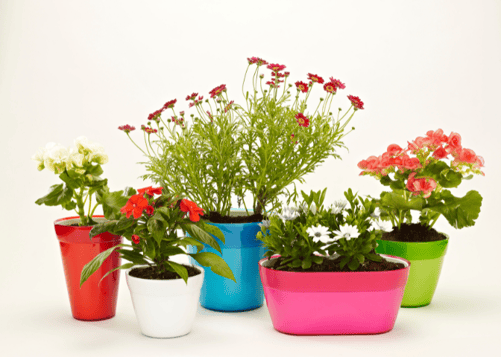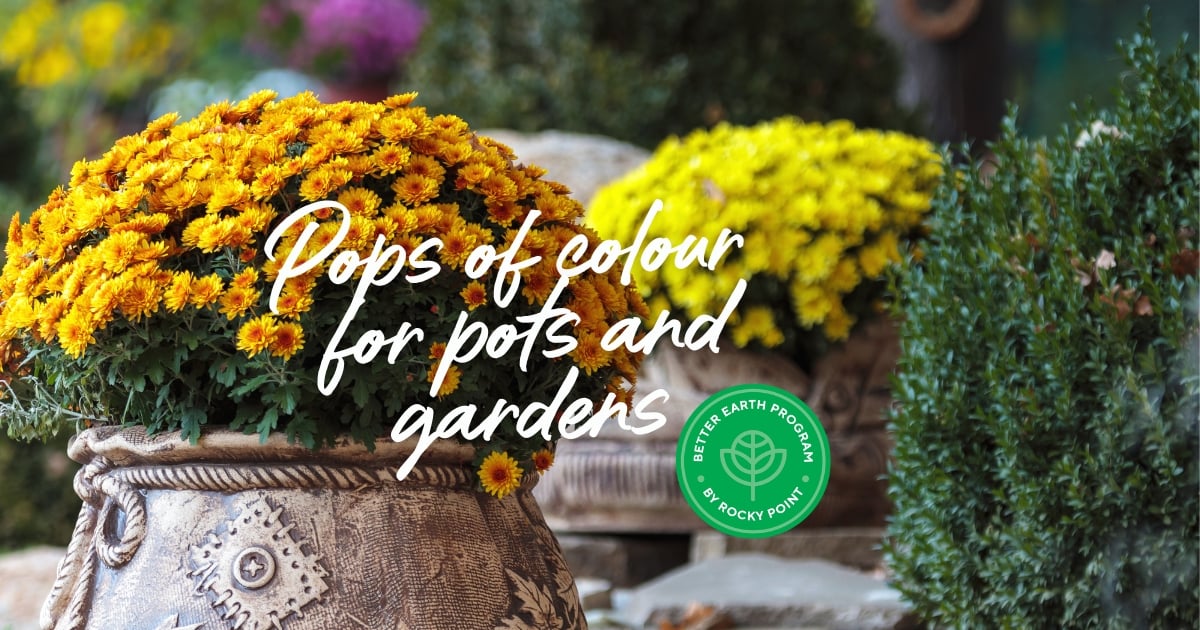With the arrival of spring, there comes a fantastic range of flowering plants to choose from when it comes to wanting to add some serious colour to the garden or create some colourful pots, planters and baskets.
For the best floral garden displays, preparing your soil before planting with Rocky Point ActivGrow Soil Improver is advised. After planting mulch thickly with Rocky Point Sugar Cane Mulch. Fertilising every 4-6 weeks with Rocky Point ActivGrow Fertiliser Pellets will see your garden flourish and produce an abundance of blooms throughout the growing seasons.
Choosing the Right Plants in Season :
Flowering annuals:
Flowering annuals are a wonderful addition to any garden, bringing bursts of colour and vibrancy. They are plants that complete their life cycle in a single year, from seed to flower to seed again. Some great annuals to plant are alyssum, dianthus, begonia, calendula, cosmos, petunias, marigolds, nasturtiums, pansy, statice, phlox, snapdragon, zinnias, verbena, salvia. These can be bought as just-started seedlings or purchased as more advanced plants already in bloom.
Flowering perennials:
Gerbera, roses, angelonia, dahlias, pentas, daisies, salvias, bacopa, calibrachoa, fuchsia, Carnation, lavender, geraniums, rudbeckias, african daisies, coleus, plectranthus. These days there are also a great range of perennial petunias that provide outstanding colour. Your climate zone will dictate what is available and best for your area.
Potted combos:
Why not also consider combining some perennial and annual flowering plants for that wow factor display that not only provides instant colour but also longevity via the perennial choices you pick.
For the best pot growing success use Rocky Point Coco Pro or Rocky Point Premium Potting Mix. Growing in pots means you can bring colour to your house, balcony, veranda or patio areas. Larger pots can even be strategically placed throughout the garden.
The Psychology of Colour in Garden Design
The psychology of colour in gardens is a fascinating topic that explores the impact of colour on our emotions and how it can be used to create a harmonious and visually appealing outdoor space. As spring arrives, bringing with it a wide range of flowering plants, it's the perfect time to consider the power of colour in your garden design. By understanding the meanings behind warm and cool colours, you can create different moods and atmospheres in your garden.

Using the colour wheel as a guide, you can select complementary or contrasting colours to create striking colour schemes. Consider incorporating monochromatic or analogous schemes for a more cohesive look.
To keep your garden colourful throughout the year, choose plants that bloom in different seasons. Spring and summer blooms can be enhanced by selecting popular flowers and implementing tips for extending their bloom time. Autumn and winter interest can be achieved by selecting plants with colourful foliage or berries, as well as incorporating evergreen plants for winter appeal.
To further enhance your garden's colour palette, consider adding colourful accessories such as garden art and outdoor furniture. By considering your surroundings and balancing colour intensity, you can create a cohesive and visually pleasing colour scheme for your pots and garden. With these tips, you can transform your outdoor space into a vibrant and lively oasis that evokes positive emotions and creates a sense of harmony.

Incorporating Colourful Containers
Incorporating colourful containers is a great way to add vibrancy and personality to your garden. When selecting pots, consider choosing them in different colours and materials to create a visually appealing display. Opt for ceramic pots in bold and vibrant hues like red, blue, or yellow to make a statement.
Alternatively, you can repurpose old containers such as buckets, tin cans, or even old shoes to add a touch of creativity to your garden. These unique and unconventional containers can be painted in bright colours or decorated with patterns to add a playful and whimsical element to your outdoor space. By incorporating colourful containers, you can easily transform your garden into a vibrant and lively oasis.
Understanding Colour Meanings
The significance of warm and cool colours in garden design cannot be underestimated. Warm colours, such as red, orange, and yellow, evoke feelings of energy, excitement, and warmth. They can create a lively and vibrant atmosphere in your garden. On the other hand, cool colours, such as blue, green, and purple, have a calming and soothing effect. They can create a sense of tranquillity and serenity in your outdoor space.
By understanding the impact of warm and cool colours, you can create different moods and atmospheres in your garden. For example, if you want to create a lively and energetic space, consider using a combination of warm colours like red and orange. These colours can make your garden feel vibrant and full of life. On the other hand, if you want to create a serene and peaceful atmosphere, opt for cool colours like blue and green. These colours can create a sense of tranquillity and relaxation.
When selecting colour combinations for your garden, it's important to consider the principles of colour harmony. Complementary colours, which are located opposite each other on the colour wheel, can create striking and eye-catching combinations. For example, pairing blue and orange or red and green can create a visually appealing contrast. On the other hand, analogous colours, which are located next to each other on the colour wheel, can create a more harmonious and cohesive look. For example, combining shades of blue and green can create a soothing and balanced colour scheme.
Experimenting with warm and cool colours and their combinations can help you create a garden design that reflects your personality and evokes the desired emotions. Whether you want to create a vibrant and energetic space or a calm and peaceful oasis, understanding the significance of warm and cool colours can guide your colour choices and help you create a harmonious and visually appealing outdoor space.
_MEB.png?width=842&height=596&name=RP_HorizontalColour(R)_MEB.png)



